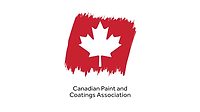Questions Surrounding CEPA

Canada is currently in the process of amending the Canadian Environmental Protection Act (CEPA). It is the federal Act regulating all ‘chemicals of concern’ in commerce in the country. Chemical assessment and the regulations flowing from it are strictly a federal matter in terms of the impacts of those chemicals on human health and the environment. Those amendments were recently tabled in the Senate of Canada and are expected to conclude by year-end 2022.
Over the past 15 years there were more than 4,000 substances of concern assessed of the 23,000 substances identified at the outset by the federal government. More than 1,550 of these substances were found to be used in coatings, adhesives, sealants and elastomers (CASE). The fourth round of chemical assessment in Canada has already begun. However, the list of additional chemicals to be prioritized over the next five years has yet to be announced. It is still unclear what actual impact the proposed amendments to CEPA will have on the way in which the federal government conducts chemical assessment going forward. The current amendments seem reasonable in that the risk-based approach for assessment under CEPA is being retained because it has worked very well to date. In fact, governments in other countries have acknowledged that fact, and some have even adopted Canada’s approach to chemical assessment.
The question is, will the government go beyond the current amendments tabled in Parliament? Will it go further in terms of the lens through which chemical assessment will be done in the future? By and large, industry supports the ‘right to a healthy environment’ now included in the preamble of the Act. However, the concept of the ‘virtual elimination’ of substances may be impossible to achieve given the implications for substances or groups of substances used by multiple industries and the lack of scientific data to support such a drastic action. However, the more reasonable approach of identifying ‘substances of highest risk,’ akin to the concept of ‘substances of very high concern’ (SVHC), is a fair aspirational approach and one that is well understood by industry. There are other concerns related to chemical assessment, which is and will be subject to increasing scrutiny in Canada in the months ahead. This will include the concept of New Approach Methodologies (NAM) for chemical assessment. This concept embraces peer-reviewed papers or ‘Science Approach Documents’ on new, progressive ‘fit-for-purpose’ approaches already being developed and tested globally and by relevant federal government departments in Canada. It is expected to continue to enhance the science-based approach to chemical assessment, which must remain the central focus of CEPA, which is something the coatings industry has always endorsed and will continue to support in Canada.
As currently suggested in the proposed amendments, imposing strict timelines for risk management actions for toxic chemicals of concern will not work. First and foremost, there are many valid reasons for this, and primary among them is the lack of available scientific data to support appropriate risk-management actions such as bans and regulations. Much of that substantive data is supplied by industry under mandatory data gathering requirements. Regulatory measures hastily imposed according to a fixed schedule have the potential of disrupting commercial activities without substantiated evidence. If that is indeed the case, one could argue it is an infringement of fundamental rights and environmental justice for companies, who could incur damages from such actions including the loss of production, revenue, jobs and other unintended consequences.
Another example of potential overreach from the proposed amendments relate to mandatory labelling. While CEPA is not the best placed Act for imposing labelling on a variety of products in commerce (e.g. pesticides, food), manufacturers understand that the mandatory labelling requirement may be necessary to implement certain decisions under the Act. However, there are many situations where substances are only ‘potentially’ toxic — at trace levels — contained in certain manufactured products. These are either naturally occurring, present as impurities in common ingredients, or been synthetized and safely introduced in formulations for specific functionality. To extend this requirement to a broad class of consumer products under CEPA would mean that companies would have to re-label thousands of products due to the inconsequential presence or trace levels of hazardous substances. This would not be beneficial for human health or the environment, nor the economic sustainability of important business lines. The same can be said for the proposed ‘watch lists’ for chemicals of concern under the Act. This would unfairly raise concerns for chemicals in products without the necessary supporting data, thus causing those products to fall out of favor with consumers. Unintended consequences like this must be avoided at all costs and cannot be supported by industry.
Another important item under CEPA is the need to ensure chemical regulations for finished goods imported into Canada from around the world are aligned with those manufactured in Canada. This should not be a major issue, as many manufactured products now sold in Canada are already fully compliant with Canadian regulations as they are manufactured by both Canadian and non-Canadian companies in Canada.
Regulation of chemicals in commerce is never a straightforward undertaking as some advocates would have us believe. While we all want safe chemicals in products, consumers also want products that work and contribute to their quality of life. This would include the protection and beautification of their valuable assets, reduced lifecycle costs for non-renewable assets and many other benefits from coatings often taken for granted. Industry must continue to make the case for chemicals in manufactured products to continue supplying valuable and reasonably priced products demanded by consumers in Canada.
Looking for a reprint of this article?
From high-res PDFs to custom plaques, order your copy today!








